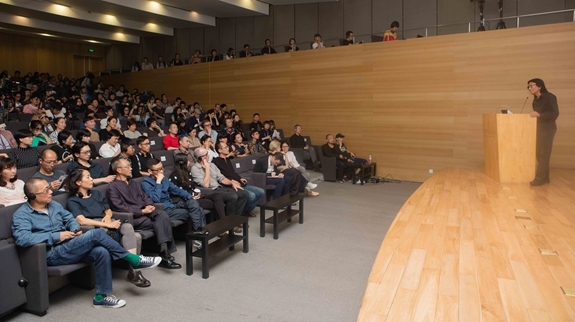
From September 22 to 24, 2016, the American art master Matthew Barney brought his operatic film “River of Fundament” to CAFA, which was the Asian premiere. “River of Fundament” was adapted from Norman Mailer’s novel “Ancient Evenings” of 1983, a story of an Egyptian magician trying to use magic and fraud to gain an eternal life. The film is composed of three operas with American culture being displayed in the background. Each part begins with an iconic American car as a clue to the narrative then there is a transition to a live performance that focuses on the complex and multi-faceted personality of the protagonist. Barney spent 8 years completing his interpretation of the novel of Mailer, to create this “River of Fundament” lasting 5 hours and 50 minutes. Since the film was screened in 2014, it has been highly controversial because of its weird and “filthy” scenes and plots.

At the symposium
At 4:30 pm on the afternoon of September 24, Matthew Barney introduced a dialogue of art creation in the Auditorium, CAFA Art Museum, he unveiled the mysteries of the veil of “River of Fundament”, Deputy Director of the School of Experimental Art Wang Yuyang hosted the event. At the beginning, Vice President of CAFA Su Xinping said that, Matthew Barney had become the most important topic of CAFA in recent days, his artistic language and expression was bound to offer important inspiration and influence on the young students and the teaching at CAFA. Prof. Lv Shengzhong gave an interpretation of “River of Fundament”: “Seeing the ‘River of Fundament’, I feel it is like a grand and solemn sacrificial ceremony happening at the end of the century, people look calm, while occasionally smiling which seems increasingly pathetic, the singers and victims are all full of passion but with a heavy heart, because the possibility of reincarnation is limited, Norman Mailer is anyone of us who emerge from the sludge.”
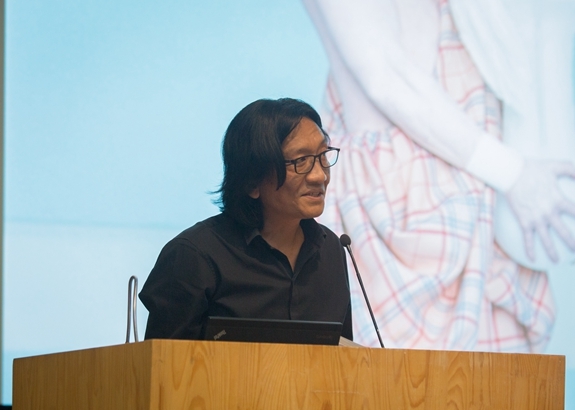
Su Xinping, Vice President of CAFA
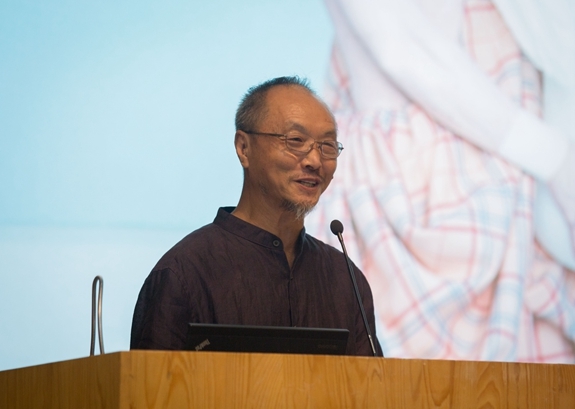
Lv Shengzhong , Professor at Department of Experimental Art, CAFA
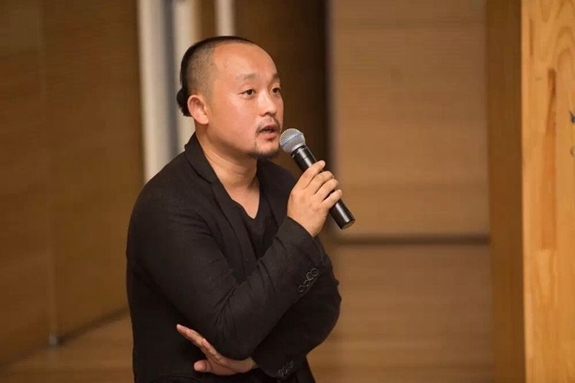
Wang Yuyang, Deputy Dean of School of Experimental Art, CAFA
The formal dialogue was presided over by the Director of UCCA Philip Tinari, Dean of the School of Experimental Art, CAFA Qiu Zhijie, artists Wang Jianwei, Cao Fei respectively gave their own interpretation of the “River of Fundament”.

Matthew Barney
First of all, Philip Tinari introduced the important position of Matthew Barney who is a key player in the history of Chinese contemporary art. Tinari said that, “Seen from the ‘River of Fundament’ we can find the culture structure, the structure of the drama and film, and the visual structure. I’d like to invite Matthew to interpret how a creator finds a balance between different levels of structure? In the face of the transnational, cross-cultural environment, what is influenced by his work?”
Matthew Barney said: “I have a very clear link with the language of drama. In opera, I tend to follow the main clue in a non-figurative form, refusing to focus on the tension between the details and macroscopic things. The tension does not appear with a fixed pattern.” He added that, “Different from the Cremaster Cycle series, which uses a lot of set environments, for example, forming a vacuum mode with a specific space, where there is no shadow, never affected by gravity and the vacuum can blur the boundaries between objects and the environment. In the “River of Fundament”, I would like to consider a real environment, to show the audience the relationship between objects, people and the environment, as well as how both produce conflict.” As for what is influenced by Matthew’s work in a cross-cultural environment, he said this work was full of obvious contrasts and conflicts, just like the city of Beijing.
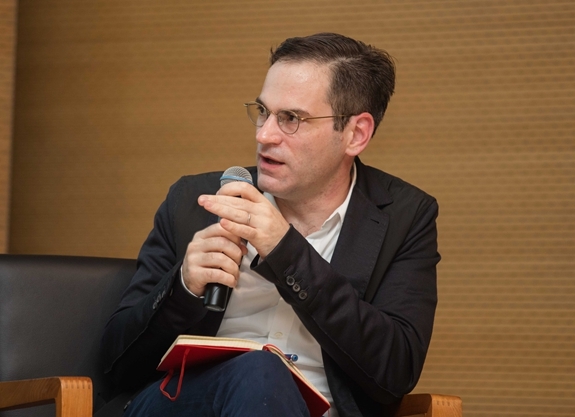
Director of UCCA Philip Tinari
In addition, Tinari mentioned Norman Mailer: “Someone says Norman depicts his failure and incompetence.” Matthew answered that: “The regions, ancient Egyptian mythology are clearly and directly contacted in the novel, which makes it harder for me to create. But then I think it can make me free, because I have topass through a link to find an abstract language.”
Artist Wang Jianwei said: “First of all, Christ was born in a manger, in Matthew’swork, people were born again in a car, and the rebirth must go through a ritual, Matthew thinks this kind of ceremony is dirty and being dirty is a challenge to our cognitive cleanliness; secondly, the fable must be displayed in a language, while Matthew’s language is the film; thirdly, a religious ritual is needed to be activated by a certain thing, so that in the film there is no boundary between cars and people, and engines and sex are blended together. ”
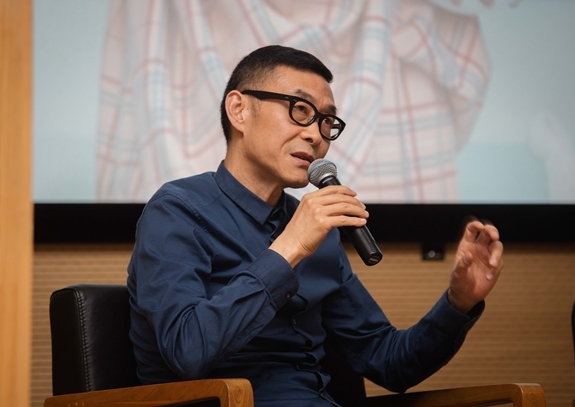
Wang Jianwei
Wang Jianwei thought Matthew Barney’s film was 6 hours long which really made people fall asleep, and they become giddy as both are likely to be the medium of mystery and realism. Matthew might believe there was a time that things would exceed provision, being loose and free and there is no knowledge interpreting the phenomenon.”
Qiu Zhijie said that, “In the Cremaster Cycle, I can see the temperament of the American national operating room, while the “River of Fundament” presents me with another American temperament, which is neurotic, but particularly New Yorkers, beside Andy Warhol, Matthew expounded a strange country which did not only have supermarkets and Coca Cola. After he suffered failure in Detroit, the USA began to think about rebirth. In the “River of Fundament”, I also find that it is filled with an African religious flow with the main clue being ancient Egyptian mythology and African religions have penetrated into every corner of the world. At the same time, I also think of how Chinese people view rebirth? While the Egyptians sought immortality, Chinese people pursued flowing on.” Finally, he questioned Matthew about, “Few images of Asian people appear in the film, is the screening of “River of Fundament” in Asia meaningful?”
Matthew Barney replied: “The history of Detroit and car industry are inseparable, but there are still some historical cultures, such as minerals, rivers, riverbeds,which are convenient to transport, so it is associated with the prehistoric culture (Indian culture). We’d like to introduce the Indian culture in the film and it is reflected both in the preface and the end, especially the end, representing the Indian culture to some extent. But the Indian culture and the culture of Asian Americans is not the same.”
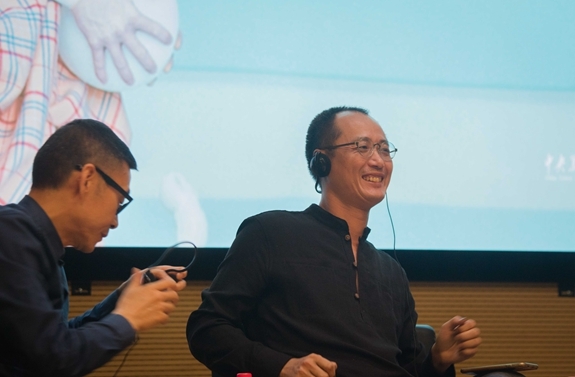
Qiu Zhijie, Dean of the School of Experimental Art, CAFA
Cao Fei tried to read the work of Barney from the perspective of vision and image, she believed that the “River of Fundament” is like an encyclopedia, including images from the internet, magazines, myths… which eventually form a visual text, Matthew could refer to a variety of styles but between the styles there might not necessarily be a link, so it appeared as a fracture.
Cao Fei said she was interested in fashion and visual factors in the images. As far as she knew, Matthew’s characters’ images and scenes are very exquisite. As a female artist, she is most interested in the female images in the works of Matthew, as his work often presents productions, sex organs, and the ambiguous relationship between two pregnant women.
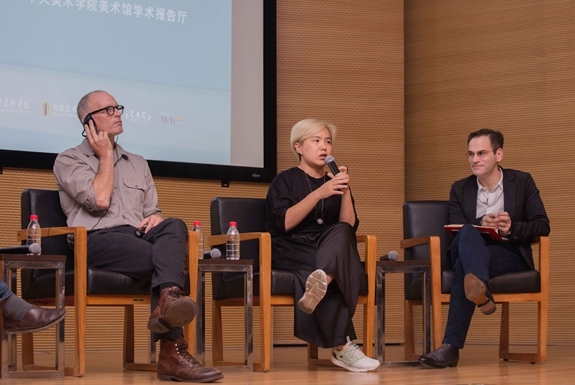
Cao Fei (middle)
Matthew said that, “For sexual passion, I feel it is interesting how we directly face sex scenes. In Mailer’s fiction, there are a lot of naked sex scenes, is there a need to understand how these naked scenes are produced? How to bring a tearfrom the work? It is very useful. I was interested in how to use the erotic scenes in the “Ancient Evenings”, instead of reducing it. If we can consider the narrative as a creature, its biological tissue function has digested the images from different sources, I would like to show these scenes like the digestive system, but there is driving force of desire, while it is the main clue: birth, pregnancy, fertility.” Matthew hoped to be able to make the character in the male-dominated world use the female language in Norman’s work, but he said, it was controversial for a lot of people of their generation, conflict was extremely important in the film, at the same time, he also hoped to find a balance.
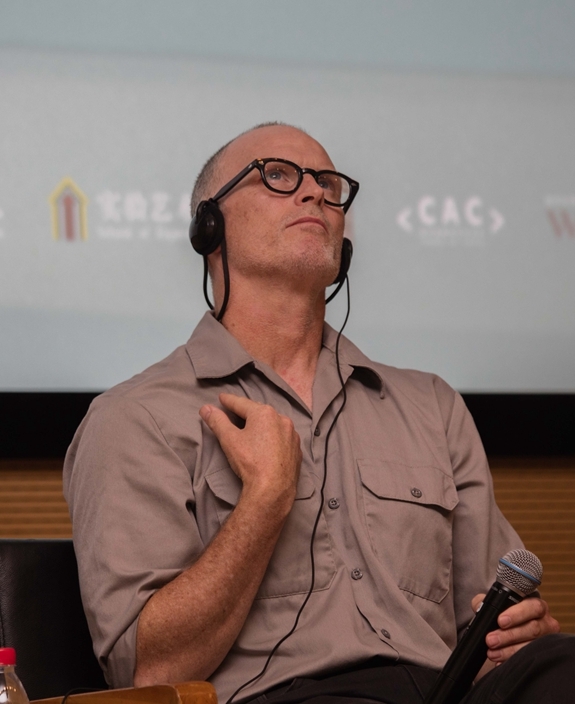
At the end of the dialogue, the audience questioned Matthew Barney from different perspectives such as voice, sex, space, humor, etc., and Matthew responded so that the audience could further understand the creation of “River of Fundament” and the work itself.
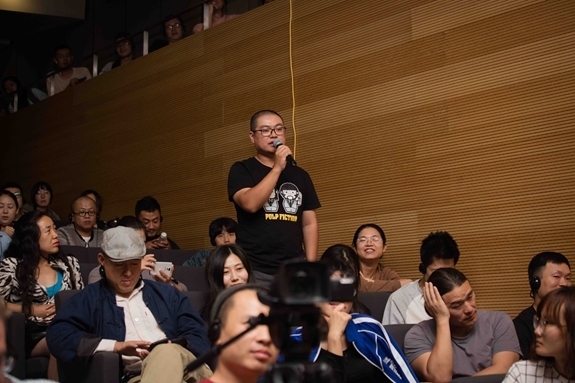
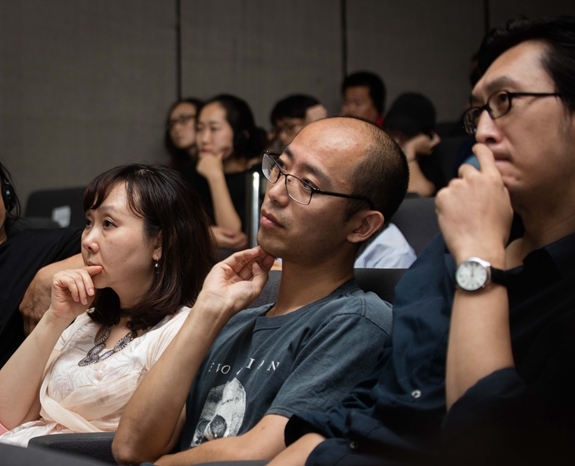
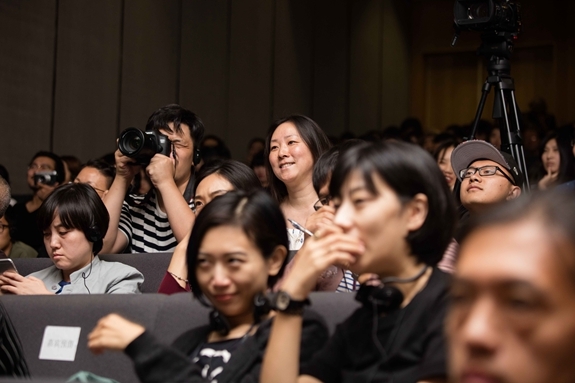
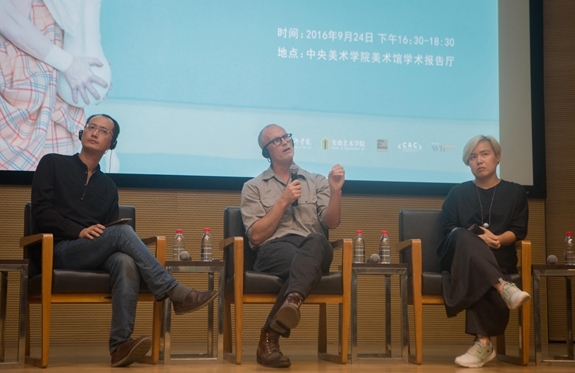
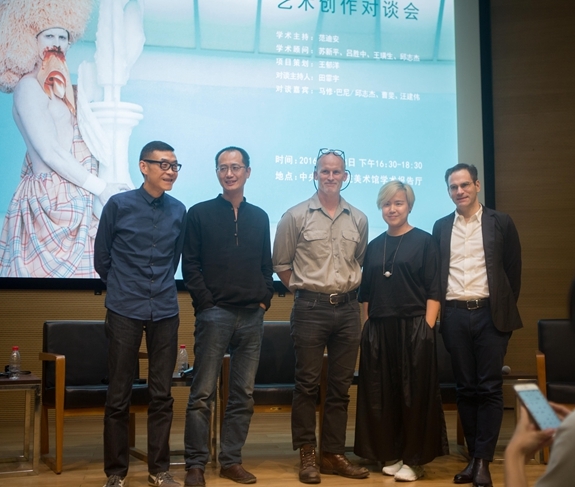
Group photo of the guests
Text by Zhong Yuwei, translated by Chen Peihua and edited by Sue Wang/CAFA ART INFO
Photo by Yang Yanyuan, Hu Sichen/CAFA ART INFO and Wang Yuqi
